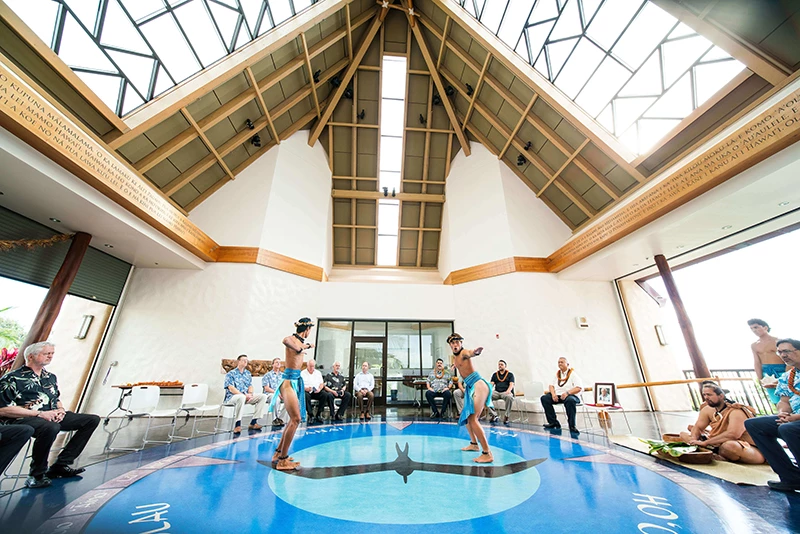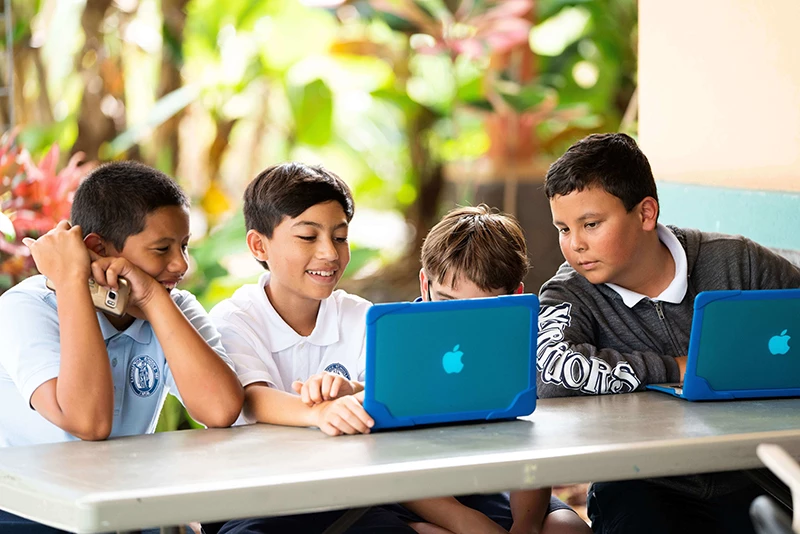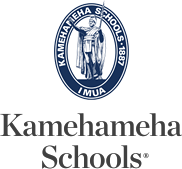Kamehameha Schools Teachers Win National Recognition
December 8, 2003
Contributed by
Kekoa Paulsen
Dee Mecham is this year's West Region winner of the NASDAQ Educational Foundation National Teaching Award for his outstanding teaching of economics to students in grades 11 and 12. Mecham, a Social Studies teacher who has taught high school economics for five years, will receive a cash prize of $10,000 at an awards ceremony in New York on April 19, 2004. The award is given annually by NASDAQ to middle and high school teachers for "most creative, original and effectual efforts" in applying economic content to any subject area.
Mecham's winning entry, "Marching Supply and Demand Activity as an Example of Physiomnemonomics" (learning economics through physical activity), was just one of the myriad ways in which he makes the teaching of economics come alive for his students. While marching in the formation of supply and demand curves, Mecham reinforces the purpose of the activity by reminding his students, "Don't just see the curve, be the curve!"
Mecham himself is humble about his achievement and said "The greater satisfaction of it all comes from having my students be able to understand my archaic economic chatter and really start to enjoy learning the concepts of economics. I love teaching economics and the challenges ahead actually add to the excitement."
James Chun, also a Social Studies teacher, was named as one of 20 regional semi-finalists (1 of 4 from the West region) who will receive $1,000 for his outstanding and creative efforts in incorporating economics concepts in the classroom. Chun submitted a lesson plan entitled "The Kapu System: How the Hawaiians Dealt with the Tragedy of the Commons" to the NCEE and included a lesson on how Hawaiians utilized scarce resources during this era.
According to Chun, this lesson was a way to bridge Hawaiian History with Economics in order to show students the intelligence of our Hawaiian ancestors and how they were able to maintain their abundant resources by obeying and enforcing the complex kapu system.
"It is truly an honor to be recognized by the National Council of Education and the NASDAQ," said Chun. "I believe this award also reflects the hard work and rigorous program that the students of Kamehameha Schools participate in daily. Mahalo to Dee Mecham for encouraging me to apply for this award and for serving as my mentor in the field of Economics."
According to Tony Ramos, principal of Kamehameha Schools high school division, "Both Dee and James are outstanding teachers at Kamehameha. They have found a way to bring a difficult subject to life for our students and we are fortunate to have them on our faculty."
"Dee and James are another example of our outstanding faculty," said Dr. Michael Chun, headmaster for Kamehameha Schools Kapalama Campus. "Both gentlemen are well respected by their peers and are quite deserving of this national recognition. More importantly, they are loved and appreciated by the students at Kamehameha and will undoubtedly continue to find innovative ways to teach Economics in the classroom."
Organized in 1965 to promote and improve the teaching of economics in HawaiëiÇs public and private schools, the Hawaiëi Council on Economic Education is a statewide partnership of business, labor and education. Its programs are administered by the Center of Economic Education and focus on the development of successful strategies for improving the quality of economic education.
Gail Tamaribuchi, director of the Center of Economic Education said, "Congratulations to both Dee Mecham and James Chun. They are both outstanding teachers who make the "dismal" science come alive and relevant to their students. They motivate and engage their students by presenting intriguing questions that peak their students' curiosity, which is a goal of effective instruction."
Kamehameha Schools is a statewide educational system founded and endowed by the legacy of Princess Bernice Pauahi Bishop. More than 5,700 students of Hawaiian ancestry are currently enrolled in K-12 campuses on three islands and at 32 preschool sites statewide. More than 12,000 additional Hawaiian learners are being served through a range of other Kamehameha Schools outreach programs, community collaborations and financial aid opportunities in Hawaii and across the continental United States.











